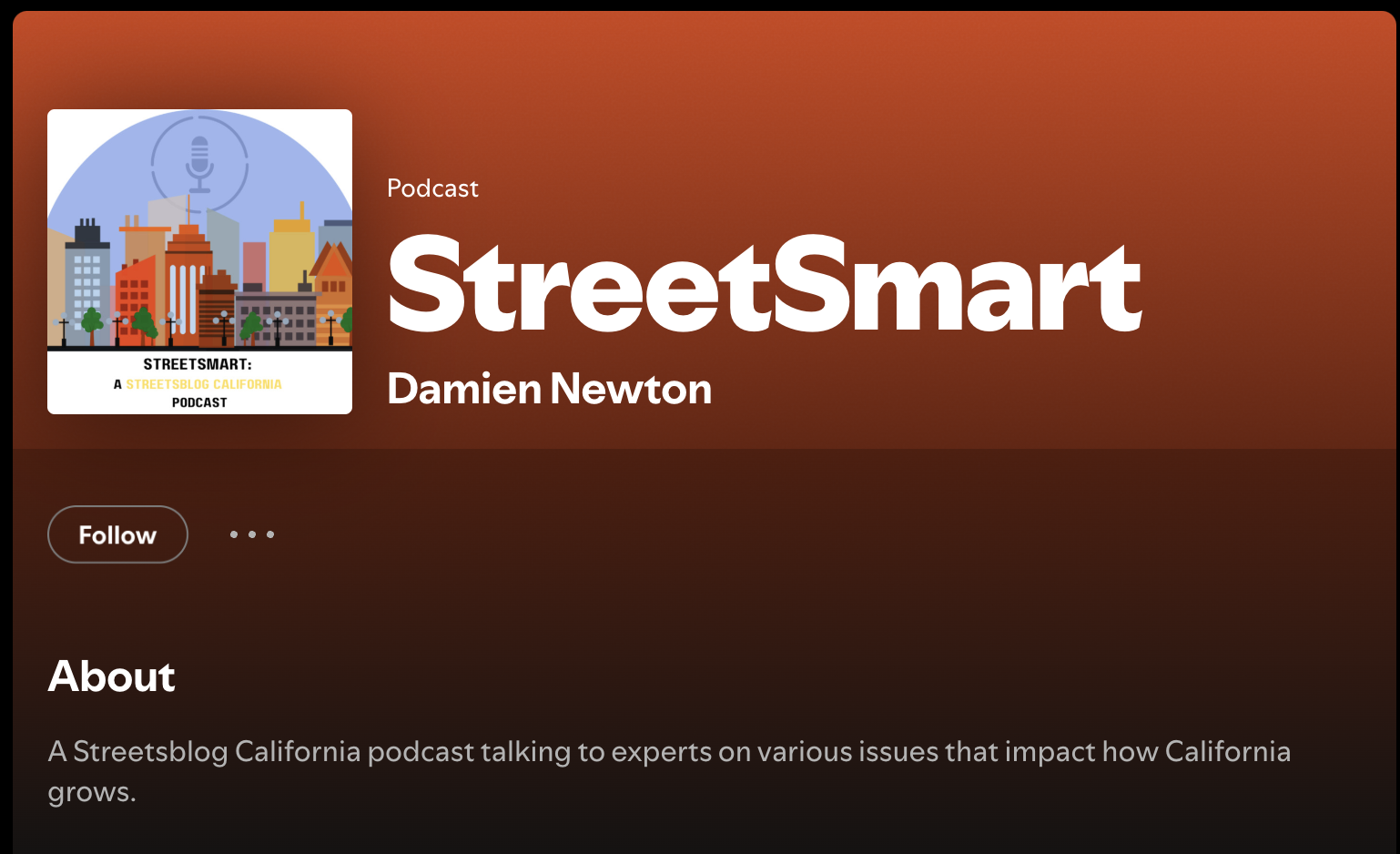California likes to hold itself up as a global leader in the battle against climate change. But despite its best intentions, the state has a serious blind spot about the impacts that the number of cars spilling out of private residences and onto its highways has on the amount of greenhouse gas emissions the state produces.
And that’s why it’s crucial to have a watchdog that understands how planning and transportation decisions made by our state government impact the quality of our air and environment in general. For eight years, Melanie Curry has been that watchdog at Streetsblog California. If you appreciate that work, please consider supporting us during our end-of-the-year fundraising drive. You can get started by clicking here.

The worst part of the state’s insistence on widening freeways and finding loopholes in environmental laws designed to limit impacts from traffic emissions is that they know better.
In September, Caltrans released a video that demonstrates exactly how greenhouse gasses from automobiles are ruining the environment.
In her coverage of the video, Curry writes, “It lays out the issues clearly: Accommodating cars means farther distances to travel, more traffic, emissions, and crashes, and more reliance on cars to get anywhere. ‘Our job now is to prioritize solutions that mitigate the impacts of climate change while equitably improving quality of life. To do so we need to rethink how we build so Californians can drive less,’ concludes the video.”
Which is why it’s maddening that just one month later, the chair of the state’s transportation commission got emotional when they talked about how Caltrans must keep investing in widening highways. In their mid 20th-century mindset, investments in bicycle and pedestrian facilities or access to transit are only for special interests, not for the general public, not for the climate, and not because California has said we need to shift our funding to more sustainable transportation modes.

So while California has made some strides in recent years in terms of addressing how it spends transportation money; there’s still more work to do. There’s nobody better to help explain what’s going on at the state and keep individuals and groups informed on how to weigh in. If you appreciate Streetsblog California’s work, consider making a donation today. California will thank you for it.






